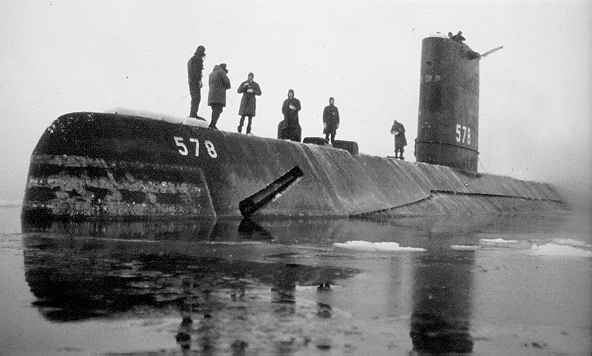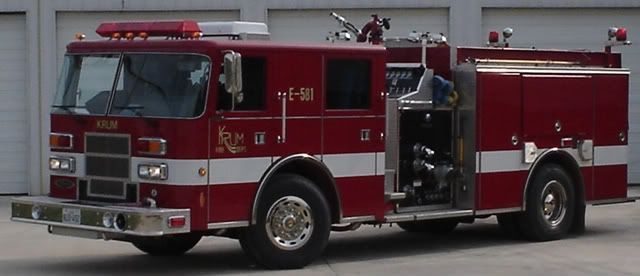
Aircraft Registration: XZ577
Type: Westland Sea King HAS5
Owner / Operator: Royal Navy
Unit / Wing: 826 Squadron

Aircraft Registration: XZ577
Type: Westland Sea King HAS5
Owner / Operator: Royal Navy
Unit / Wing: 826 Squadron


Interstate 580 (I-580) is an 80-mile (129 km) north-south Interstate Highway in Northern California. The heavily traveled spur route of Interstate 80 connects the San Francisco Bay Area to Interstate 5 in the state’s Central Valley, providing access from San Francisco to the southern San Joaquin Valley and Southern California.



582 Squadron Bomber Command
DLXXXIII
584 £7 less than my wages this week ![]()
Special Report: United Airlines Flight 585
By: Darryl Morrell
The wreckage of United Airlines 585. (File Photo)
For the flight crew of Captain Harold Green and his First Officer, Patricia Eidson, Sunday March 3rd began just like any other day. They were on a second day of a busy schedule flying Boeing 737s on a number of domestic flights throughout the western United States. The evening before, they checked into a hotel in Denver, ready to take over the flight from another crew early the next morning. On the morning of the 3rd they were rostered to take over from another crew, Boeing 737-200, N999UA. The aircraft was operating as flight 585 from Peoria, Illinois, to Colorado Springs, via Moline and Denver. The aircraft departed Peoria on schedule at 5am. The flight to Moline and on to Denver was completely uneventful and it touched down ahead of schedule in Denver. The previous crew handed the aircraft over to Green and Edison, reporting no problems on the trip to Denver. The aircraft was checked by the dispatch engineer and apart from the avionics door latch being out of its stowed position, he reported no problems with the aircraft and the crew were told that it was fully servicable to carry on the next sector of the flight.
The weather center reported good conditions for the next leg, with visibility at 100 miles and the temperature at 49° F. On board the aircraft there were 20 passengers, with 3 flight attendants to look after them.
The aircraft took of as normal with the Captain flying and the First Officer handling the communications. The flight to Colorado Springs was expected to take about 20 minutes. The departure controller vectored them on to a heading of 140° ready to intercept the designated airway, V81, to Colorado Springs. Three minutes later the crew were cleared to maintain 11,000ft. The aircraft called Approach control reporting their present altitude and that it had copied “Information Lima” from the ATIS transmission. This information current for the last 40 minutes was reporting “…wind 310 at 13 knots, gusting to 35, low level wind shear warnings are in affect, occasional severe turbulence reported by numerous aircraft between FL180 and 380. Local aviation wind warning in effect calling for winds out of the northwest, gusts to 40kt and above.”
Approach instructed 585 to proceed to the VOR, then leave it on a heading of 165° in preparation for being vectored to Runway 35 for a visual approach. The controller reported current winds as 320 at 13kt, gusting to 23kt.
Several minutes later ATC cleared the 737 to descend to 10,000 feet and 3 minutes later requested they descend to 8,500 feet. When the aircraft reported “airport in sight” they were instructed to maintain 8,500 feet until on base leg, then they were cleared for a visual approach to runway 35, and to contact the Tower on 119.9Mhz. On final the Captain was flying the aircraft, the first officer was handling communications, the runway was in sight, the aircraft was configured, and the checklist was complete. The aircraft was turning from its 45° intercept to the extended runway centerline, and the first officer called “we’re at 1,000 feet.”
Dozens of witnesses in the community directly under the extended centerline watched as the airplane levelled off momentarily on the runway heading, 3.5 miles from the threshold. Then, it rolled to the right, pitched down until reaching a nearly vertical attitude, and compacted itself into a 39-foot wide, 15-foot deep crater in an area known as Widefield Park. All onboard were killed.
An aerial view of the United 585 crash site. (File Photo)
The Cockpit Voice Recorder (CVR) tape for the last 12 seconds of the flight indicated the crew was completely surprised by the upset and attempted corrective measures. Two seconds after calling “1,000 feet,” the first officer exclaimed, “Oh, God.” The captain called, “15 flaps,” an indication that he was initiating a go-around. The first officer responded “15.” The following five seconds contained only exclamations as the crew tried to regain control.
For the last 20 seconds, the Flight Data Recorder (FDR) showed the rate of heading change consistent with a 20-degree (right) bank angle and a turn for alignment with the runway. Sixteen seconds prior to the crash, the thrust was increased to about 6,000 pounds per engine (from 3,000 pounds). As the thrust was increasing, the first officer made the “1,000 feet” call.
Within the next four seconds (about nine seconds prior to the crash), the heading rate increased to about five degrees per second to the right, nearly twice the rate of a standard turn. The first officer said, “Oh, God,” - the altitude decreased rapidly; the indicated airspeed increased to over 200 knots; and the normal acceleration increased to over 4g.
“The two most likely events that could have resulted in a sudden uncontrollable lateral upset,” said the Safety Board, “are a malfunction of the airplane’s lateral or directional control system or an encounter with an unusually severe atmospheric disturbance. Although anomalies were identified in the airplane’s rudder control system, none would have produced a rudder movement that could not have been easily countered by the airplane’s lateral controls. The most likely atmospheric disturbance to produce an uncontrollable rolling moment was a rotor (a horizontal axis vortex) produced by a combination of high winds aloft and the mountainous terrain. Conditions were conducive to the formation of a rotor, and some witness observations support the existence of a rotor at or near the time and place of the accident. However, too little is known about the characteristics of such rotors to conclude decisively whether they were a factor in this accident.”
During the course of the investigation, NTSB personnel interviewed several sailplane pilots who spend their spare time chasing thermals along Colorado’s Front Range. These aviators probably know as much (if not more than) the region’s professional meteorologists about the wind flows around the peaks and through the passes.
The sailplane pilots seemed to agree that rotors are a fairly common occurrence and that they sometimes touch the ground on the lee of the mountains. They often are present along with mountain waves and lenticular clouds.
One of the Safety Board’s recommendations stemming from this investigation is that the FAA develop a meteorological aircraft hazard program to include airports in or near mountainous terrain. This program would be based on research conducted at Colorado Springs to observe, document and analyze potential meteorological aircraft hazards with a focus on the approach and departure paths.
HISTORY OF THE AICRAFT INVOLVED:
The 737-200, built in Renton in 1982, started out as part of Frontier Airline’s fleet. Four years later, Frontier sold the plane to United and it was assigned tail number N999UA.
On a Feb. 25, 1991, flight, N999UA’s rudder deflected inexplicably to the right. The problem went away when the pilots switched off the yaw damper, a device that automatically commands small rudder adjustments during flight. Mechanics replaced a part called the yaw-damper coupler and returned the plane to service.
Two days later, a different flight crew reported N999UA’s rudder again moving to the right. The new coupler evidently had made no difference. This time mechanics replaced a valve in the yaw damper and returned the plane to service.
Four days later, on the blustery morning of March 3, 1991, Captain Harold Green and First Officer Patricia Eidson were bringing N999UA down for a routine landing in Colorado Springs. At 1,000 feet, the jet suddenly flipped to the right and dived straight down, smashing into a city park and killing all 25 on board.
The pilot of a Cessna flying near the airport called the tower with a bird’s-eye account: “We just saw the plane . . . uh just suddenly a complete downward dive.”
Advertisement
From the control tower, air-traffic controller Kevin Ford reported from another perspective: “It looked like a dropped pencil going straight down.”
It didn’t take long for errant rudder movement to surface as a possible cause of the crash. Witness reports and readings from the plane’s flight-data recorder confirmed that the 737 had traced a classic aerobatic maneuver, known as a “split-S,” into the ground.
A split-S results from radically altering the symmetry of flight. Such a quick or severe change would be consistent with the right engine or right wing falling off, but that had not happened. The pilots could have moved the rudder to the extreme right, but to do so within 1,000 feet of the ground would be suicidal. The other possibility was that the rudder had moved on its own.
Investigators with the National Transportation Safety Board were unfamiliar with the make up of the plane’s rudder-control system when they arrived in Colorado Springs to comb through N999UA’s wreckage.
586
For those interested in cycling, the number 586 may be significant in that it’s the designation for a frameset that weighs less than 1kg ![]()
587
On November 12th 2001 just two months after the September 11th terrorist attack on the World Trade Centre American Airlines flight 587 crashed in a borough of New York City killing 260 people on board and a further 5 people on the ground.
Immediate fears grew that this was another terrorist attack on American soil but this was later ruled out and pilot error was blamed for the accident that to date is the second deadliest U S aviation accident in history.
588 Achilles is an asteroid discovered on February 22, 1906 by the German astronomer Max Wolf. It was the first of the Trojan asteroids to be discovered, and is named after Achilles, the fictional hero from the Iliad
589, add them together and you get my age when i got Married, did i really want to be reminded!! ![]() …chris
…chris
590 the next number in this sequence
591 km done today
592 is an 0-6-0 steam locomotive owned by The C Class Locomotive Preservation Society.
593
USS Thresher SSN 593.
On April 10 1963, USS Thresher, an American nuclear submarine was lost
off the New England coast. 129 Navy crew members and civilian technicians were lost.
I have nothing but admiration for anyone that has served in the confines of a submarine,
I couldn’t do it.
594 mm is 23.39 inches